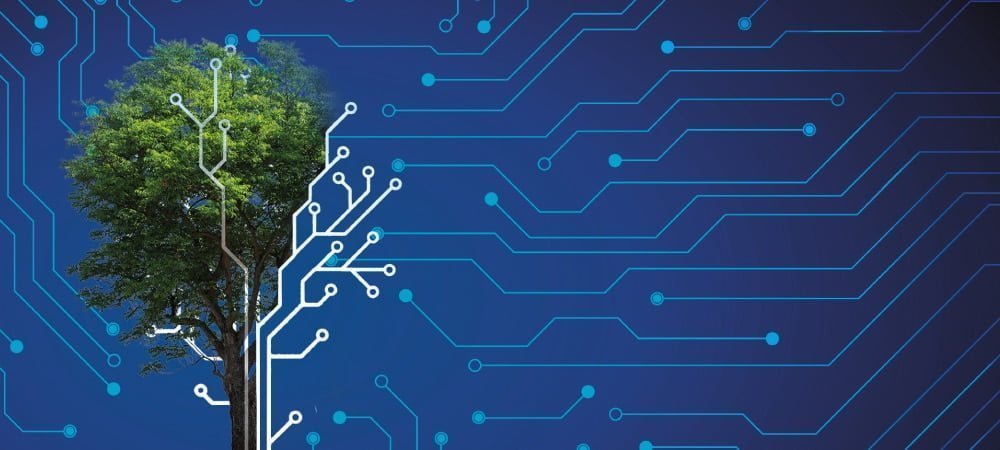Keep SAP in your own data center and still go to the cloud: The best of both worlds

German SAP users are generally skeptical about the public cloud. This was once again confirmed by the latest survey conducted by the SAP user association DSAG in spring 2023. According to this, just under half of S/4 Hana users use an on-premises or private cloud platform, and this is also where there was the greatest increase compared to previous studies. In contrast, only three percent use the public cloud as their S/4 platform.
On-premises cloud models include the HPE GreenLake platform. It offers the
same advantages as the public cloud - such as simplicity, flexibility and consumption-based billing - but is installed in the customer's data center or at another location of its choice. For example, at a large production site or in a colo-cation data center. The systems are operated by HPE, up to application base operation if desired.
More than on-prem
Some providers mean by on-premises cloud only consumption-based billing for IT infrastructure. In reality, however, much more is required: for example, fast and simple scaling of system capacities as needed, operational responsibility by the provider with SLA for every location worldwide, and a management portal through which the customer can very easily place orders, control costs, or overlook the status of his entire system landscape.
But how is it possible to deliver these benefits in the customer's data center? It involves a variety of building blocks in areas such as automation, analytics and artificial intelligence (AI), processes, globally distributed service locations - and, last but not least, a lot of experience. In the case of HPE GreenLake, this is backed by more than a decade of learning - as well as a whole series of targeted acquisitions of cloud-focused companies.
Today, around 65,000 customers worldwide use HPE GreenLake with a total contract volume of ten billion USD. A logical consequence of this is that HPE GreenLake is now ranked third among cloud service providers by IDC.

HPE GreenLake is much more than consumption-based billing in your own data center - it's a cloud model from ordering to operation.
IaaS, PaaS and SaaS
The GreenLake portfolio today includes a large number of IaaS, PaaS and SaaS services and a large partner ecosystem. Services include bare metal, hyperconverged systems, containers, machine learning operations, VDI, a range of industry solutions and many more. SAP is thus just one particular workload for HPE GreenLake—albeit a particularly prominent one—with which HPE is particularly familiar due to its long shared history.
So how does an on-premises cloud work? Here is one example of many: the rapid scaling of system capacity in line with demand. HPE ensures this by two main means: a physical capacity buffer in the customer's data center and metering as well as active capacity analysis and forecasting using analytics and AI. Among other things, this determines the amount of physical resources required, which in turn can be activated and deactivated again within minutes.
Using long-term capacity forecasts, HPE analyzes whether and when the physical IT infrastructure needs to be expanded so that delivery processes are triggered before a bottleneck occurs. Metering—based, among other things, on the technology of Cloud Cruiser, a company acquired by HPE—is the basis for consumption-based billing and for the originator-based internal allocation of IT costs. The latter is done by the customer via the GreenLake portal, which can also be used for monitoring, compliance management, multi-cloud management and other purposes.
GreenLake with SAP or directly from HPE? If you want to move your SAP environment to an on-premises cloud
model with GreenLake has two basic options: He can do it with SAP or with HPE. However, the respective offerings differ fundamentally, and it depends on the IT strategy, history and other preferences which offering is the right one for which customer.
Rise plus HPE
The difference in a nutshell: The SAP offering is part of the Rise strategy and relates exclusively to services, applications and workloads that are part of the S/4 Hana portfolio—HPE supports SAP ERP/ECC 6.0 as well as applications and workloads outside the SAP universe with HPE GreenLake in addition to S/4. In addition, customers can decide which operational tasks HPE should take over and which they want to keep in their own hands.
SAP is using HPE GreenLake for its S/4 Hana Cloud, Private Edition, Customer Data Center Option offering. HPE GreenLake is ordered by SAP in this scenario and is part of the overall Rise contract. In this overall solution offered by SAP, HPE is responsible for operation with HPE GreenLake up to the hypervisor level. SAP operates the application services on top of this and acts as the responsible overall contractor to the customer for the complete stack.

GreenLake from HPE and from SAP - a comparison.
Customer Data Center
For customers who have already migrated to S/4 or would like to migrate and for whom SAP's specifications are suitable, the Customer Data Center option is an attractive alternative to the public cloud. For those who need more flexibility, for example to use the on-premises cloud model for other applications at the same time, GreenLake directly from HPE is suitable.
One question remains: If the SAP infrastructure is owned by the customer, how does the transition to an on-premises cloud work, where the vendor owns the systems and provides them to the customer as a service? One answer in the case of HPE GreenLake is that HPE's house bank—HPE Financial Services—buys the systems from the customer. So the customer gets an injection of capital that it can use as part of the GreenLake contract or for other digitization projects. When the systems reach the end of their life cycle, they are renewed under the GreenLake contract. HPE has set up a circular economy system for the old systems that are no longer needed: They are either remarketed as used equipment or disposed of in accordance with appropriate environmental certificates.
Better than public cloud
The public cloud has been an important driver of digital transformation in recent years. With increasing use, users have also become increasingly aware of its downsides—for example, with regard to data sovereignty, latency and integration with in-house applications. Nor has the assumption that the public cloud is generally more cost-effective than in-house operation proved to be true, because flexibility has its price.
On-premises clouds have added an important alternative to customers' options for using cloud computing. Customers thus get the features of the cloud, but on their terms and under their control. The public cloud remains an important part of any IT mix, but now customers have a real alternative. This also applies to SAP—the application, in other words, that controls the core business-critical processes in many companies and provides the most important company data. The future will show how SAP users decide.




